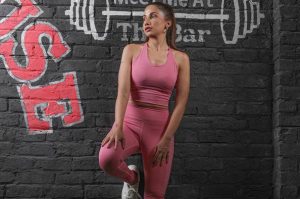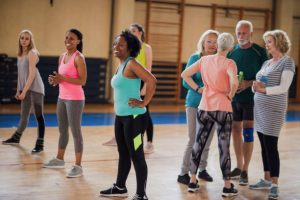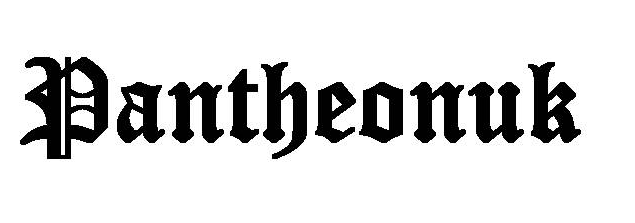In recent years, the line between workout wear and everyday fashion has become increasingly blurred. This shift has given rise to a new category of clothing that seamlessly transitions from the gym to the street.
At the forefront of this trend are moisture-wicking t-shirts that look stylish enough for casual outings, which have evolved from simple exercise attire to versatile wardrobe staples. Other key pieces in this athleisure revolution include, gym leggings for women, sports bras designed to be worn as crop tops, and versatile joggers that pair well with both athletic and everyday wear.
Even accessories like multi-functional bags have adapted to bridge the gap between gym and street style. This evolution reflects a broader change in how we approach fashion, prioritizing comfort and functionality without sacrificing style.
Versatility: The Key to Multi-Functional Clothing
The appeal of multi-functional clothing lies in its versatility. Modern consumers lead busy lives and demand clothing that can keep up with their varied daily activities. A pair of well-designed leggings, for instance, can take you from a morning yoga class to a casual lunch meeting and then to running errands, all without the need for an outfit change.
This versatility is achieved through thoughtful design and innovative materials. Many brands now use high-performance fabrics that offer moisture-wicking properties, four-way stretch, and odor resistance. These technical features ensure that the clothing performs well during workouts while remaining comfortable and presentable for other activities.
Sustainability and Conscious Consumption
The rise of multi-functional clothing aligns with a growing consumer interest in sustainability. By investing in versatile pieces that can be worn in multiple settings, consumers can build more efficient wardrobes with fewer items. This approach to fashion supports a more sustainable and conscious consumption model.
According to a report by Grand View Research, the global recycled textiles market is expected to reach $8.8 billion by 2028, growing at a rate of 4.5% annually from 2021 to 2028. This trend is reflected in the athleisure market, with many brands incorporating recycled materials into their products.
Fashion Meets Function
The success of multi-functional clothing lies in its ability to blend fashion with function. Designers are now creating pieces that not only perform well during physical activities but also look stylish enough for casual social settings. This has led to collaborations between sportswear brands and high-fashion designers, further blurring the lines between athletic wear and street fashion.
 One notable trend is the incorporation of fashion-forward elements into athletic wear. For example, leggings now come in a variety of prints, colors, and textures, making them suitable for pairing with a wide range of tops and accessories. Some brands are even introducing leggings with subtle design details like side stripes or mesh panels, adding a touch of style without compromising functionality.
One notable trend is the incorporation of fashion-forward elements into athletic wear. For example, leggings now come in a variety of prints, colors, and textures, making them suitable for pairing with a wide range of tops and accessories. Some brands are even introducing leggings with subtle design details like side stripes or mesh panels, adding a touch of style without compromising functionality.
Technological Advancements
The evolution of multi-functional clothing has been significantly aided by advancements in textile technology. Smart fabrics that can regulate body temperature, repel water, or even monitor vital signs are becoming increasingly common in athletic wear.
The global smart textile market is predicted to reach $5.55 billion by 2025, growing at a rate of 30.4% each year from 2020 to 2025. This growth indicates the increasing integration of technology into our clothing, further enhancing the multi-functionality of athleisure wear.
Cultural Shift and Workplace Acceptance
The rise of multi-functional clothing also reflects a broader cultural shift towards more casual and comfortable attire. This trend has been accelerated by the COVID-19 pandemic, which saw many people working from home and prioritizing comfort in their clothing choices.
Even as people return to offices, there’s a growing acceptance of more casual and comfortable clothing in professional settings. This shift has further fuelled the demand for multi-functional clothing that can transition seamlessly between different environments.
Inclusivity and Body Positivity
Another factor contributing to the popularity of multi-functional clothing is the industry’s move towards greater inclusivity and body positivity. Many brands now offer their products in a wide range of sizes and designs that flatter diverse body types.

This inclusive approach has broadened the appeal of athleisure wear, making it accessible and desirable to a wider audience. It’s no longer just about performance; it’s about feeling confident and comfortable in clothing that adapts to your lifestyle.
The Future of Multi-Functional Clothing
As we look to the future, the trend of multi-functional clothing shows no signs of slowing down. Industry experts predict continued innovation in materials and design, with a focus on enhancing both performance and style. We can expect to see more integration of technology, such as built-in UV protection or biodegradable materials.
There’s also likely to be a greater emphasis on customization, allowing consumers to tailor their clothing to their specific needs and preferences.
Conclusion
The rise of multi-functional clothing, exemplified by the evolution of gym wear into street wear, represents a significant shift in how we approach fashion. It’s a response to our changing lifestyles, our desire for comfort and convenience, and our growing awareness of sustainability issues.
As consumers continue to prioritize versatility, comfort, and style in their clothing choices, the line between athletic wear and everyday fashion will likely continue to blur. This trend not only offers practical benefits but also challenges traditional notions of what constitutes appropriate attire for different settings.
The future of fashion is multi-functional, adaptable, and inclusive. As we move forward, we can expect to see continued innovation in this space, with clothing that not only meets our diverse needs but also expresses our personal style and values.






